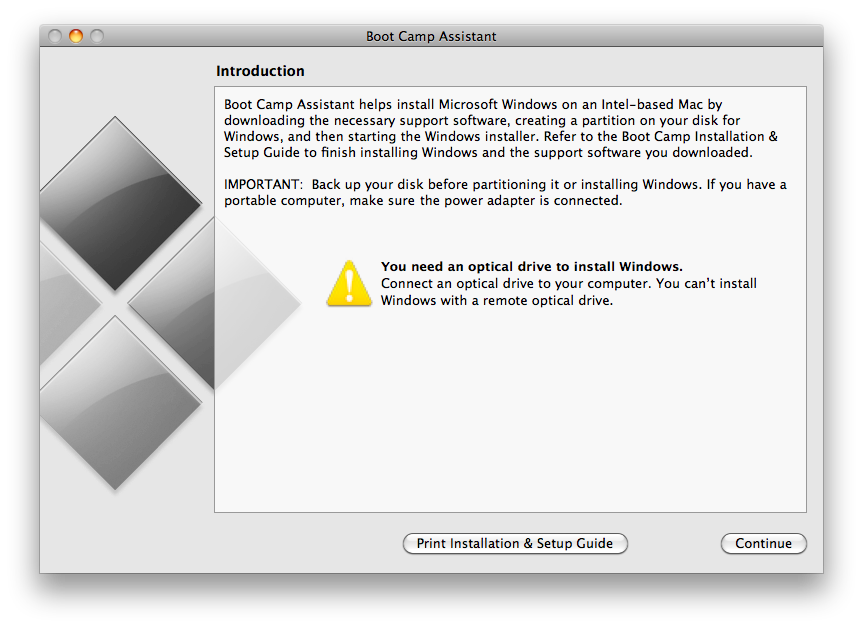
I was never able to get a USB pen containing any Windows or Linux Setup to boot on the MacPro, so I had to burn a DVD, after "rebuilding" the ISO from Microsoft Insider with oscdimg (this can only be done in Windows, but I did have my Windows7 Bootcamp partition.) Then, I remembered that with an SSD for Windows, an SSD for OSX and a big drive for documents and media, I still had a free bay, so I decided to try the Windows10 Technical Preview 圆4.
BOOT CAMP SUPPORT SOFTWARE 4.0.4033 BSOD INSTALL
This thread helped me immensely to install Windows7 圆4 on my MacPro 1,1, with the caveat that the "jowie" method of building an "EFIBOOT" Windows7 installation CD did not work for me, I had to use the "oscdimg" method detailed here. Note: Not necessarily relevant, but I'm also using tiamo's thunking boot.efi to run 10.9 on this box. I also named the C: drive "BOOTCAMP" to enable VMWare Fusion to identify it. Accordingly, I disabled them by navigating to Windows/System32/drivers and appending ".DISABLED" to AppleHFS.sys and AppleMNT.sys.ġ1) Since Aero wasn't active, I selected an Aero theme in the system preferences to get it running.
BOOT CAMP SUPPORT SOFTWARE 4.0.4033 BSOD DRIVERS
To do this, I downloaded InstEd It! Plus, and used it remove the LaunchCondition table from the BootCamp64.msi file located in the BootCamp/Drivers/Apple/ folder.ĩ) I then ran the BootCamp64.msi file directly without any hiccups.ġ0) The second big hitch: The HFS disk drivers Apple includes as a part of the Boot Camp package are buggy, and very apt to crash your system shortly after boot. I decompressed the archive.Ĩ) The first big hitch: Apple's 64bit driver installer refuses to run on a Mac Pro 1,1 unless the built-in system check is disabled. Once copying and expansion of core files completed, I restarted the system.ĥ) I selected the Windows partition from the EFI boot menu.Ħ) Windows completed its installation, and I entered basic configuration information (user account info, network settings, etc.).ħ) Once at the Windows 7 desktop, I downloaded Boot Camp from Apple's web site to get native drivers for the system. (for the benefit of future readers–see this post below if you encounter a "Select CD-ROM Boot Type" prompt).ģ) In the installer, I reformatted the 250GB FAT partition as NTFS.Ĥ) I began installing Windows 7 64bit Ultimate to the 250GB NTFS partition. I selected my Windows 7 installation DVD and booted it up.


Aside from a couple of quirks, the process was actually pretty simple:ġ) I formatted my destination disk (located on one of the four internal drive sleds) with two partitions, a 250GB FAT, and a 500GB HFS+ partition (for iTunes media, incidentally), using a GUID scheme (note that you'll need to use MBR if you're going to install Windows 7 32bit).Ģ) I restarted my Mac Pro while holding the Option key to bring up the EFI bootable devices menu. As it happens, I just installed Windows 7 64bit Ultimate Edition on a Mac Pro 1,1 today.


 0 kommentar(er)
0 kommentar(er)
